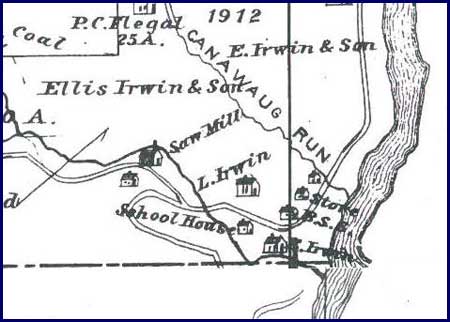Historic Archaeology
Introduction
There are many ways to study the past. History can be analyzed and interpreted by examining documents, newspapers, maps, material culture, artifacts, and primary sources. More recently oral history - or personal narratives recounting people, places and events - has been embraced as another interpretive tool. Generally, history refers to the period of human existence on earth for which written records and other primary source materials are available. Another equally important interpretive tool by which to understand history is historic archaeology. That is, the recovery and study of the tangible remains of the recorded past derived from cultural and historic resources. Such resources include geographic features; buildings; wells; privies; artifacts such as dishes, glassware, tools, hardware, and toys; and personal items that recount the daily lives of people and cultures.
In addition to studying objects, archaeologists also analyze documents and other primary sources, including deeds, tax records, maps, and census data, to answer questions and offer interpretations about past life ways. Documents reveal information regarding customs, traditions, practices, ethnicity, and social and economic status of people who inhabited a household and comprised a community. Documents can be co-interpreted with artifacts to understand how individuals and communities lived, worked, and adjusted to economic, political, social, and demographic changes. Traditionally, historic archaeology was used only to confirm or add details to the written record. More recently, however, such research has been embraced as another means to validate understandings of the life ways of people and cultures that have been seldom understood, including those of slaves, laborers, immigrants, farmers, and the indigent.
This overview of historic archaeology in Pennsylvania places special emphasis on European influence and culture in the New World. There exists, too, a rich history of Native American culture that archaeology has helped to uncover, a subject briefly discussed in the Early Settlement portion of this overview. As there are a large number of historic archaeological sites and an extensive library of associated historic records in Pennsylvania, generally more is known about these sites than prehistoric sites.
The links on the left take you to topical discussions with samplings of the findings of historic archaeology in the Keystone State. As you will see, a thorough interpretation of historic people, places, and events involves examining a myriad of sources. Written records are highly important. So, too, are first person accounts to the extent that they may be available. Newspapers and maps can reveal important information. And equally as important are the findings of historic archaeology. Archaeological studies augment the research of historians, social scientists, and other experts, thus offering the opportunity for more complete and thorough understanding of the past. Such an understanding is vital in interpreting history and historic places and informing the public about the value of learning from the past.

Artifacts from an historic archaeological site near Clearfield
Pages in this Section
Early Settlement Archaeology: The earliest recorded contact between Europeans and the Native Americans of Pennsylvania occurred in 1608. Visit this page for an overview of early interactions between these two groups.
Military Archaeology: As a result of its central location on the Eastern seaboard many important battles of the nation's 18th and 19th-century wars took place in Pennsylvania. Archaeological investigations have been conducted at a number of forts and battlefields, providing tangible evidence of these battles as well as soldier's lives, physical surroundings, and military organization.
Canal Archaeology: The development of Pennsylvania's canal system began in the early 1800s. Financed largely by the Commonwealth's General Assembly, by 1834 over 600 miles of canal and 125 miles of auxiliary railroad were opened between Philadelphia and Pittsburgh.
Agricultural Archaeology: Throughout its history, Pennsylvania has boasted a rich legacy of agriculture. Today, agriculture remains among the Commonwealth's leading industries.
Iron and Industrial Archaeology: Iron-making began in Pennsylvania as early as 1720 and evolved into a key industry because of the abundance of high-quality iron ore, limestone, and trees in the Commonwealth. Much has been learned by examining the archaeological remains of the company towns that grew around the furnace complexes.

An 1878 map of a small mill community